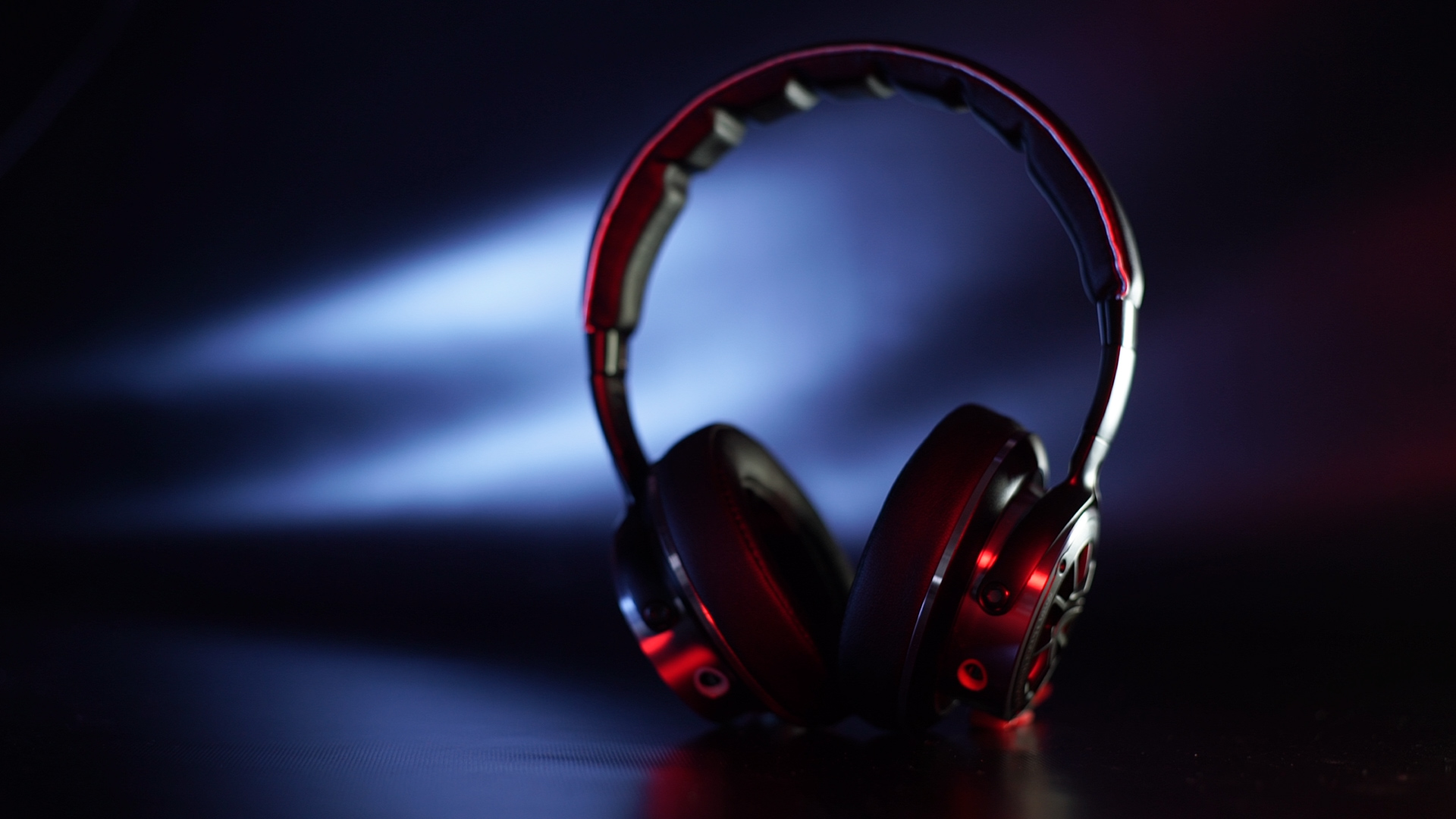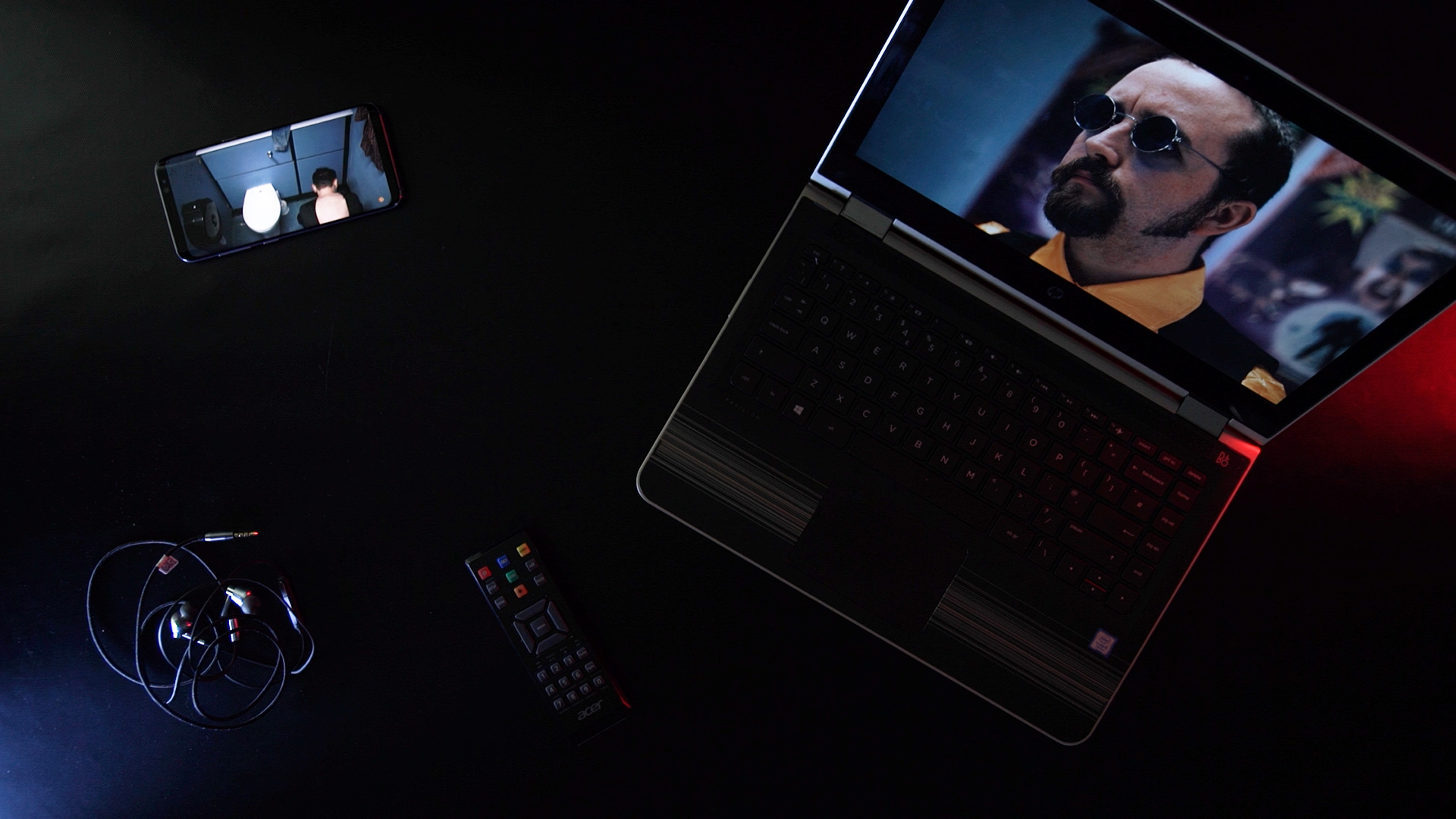Before you hit the final export, there are some things you should be doing to make sure your film’s sound is audible, clear, and comfortable for your audience. Let me show you TWO tricks that will help your sound stand out from the crowd!
Just like testing the picture of your film on a bunch of different TVs, phones, and computer screens, you should also be DEVICE TESTING the sound before you export the final mix.
If you are in the recording, editing, or mixing process: check out our indie film sound guide here for all the basics of sound.
First of all, try listening to your mix on the best quality audio device you have access to. In our case, this is a set of studio audio monitors owned by our friend Jordan, a musician and producer. But not everyone has the space to set up an acoustic-proof studio with mega expensive equipment.
For most of us, and that’s us included, a set of headphones is what we have access to for the majority of the sound editing and mixing process.
If you are serious about your sound, it’s worth investing in a strong and great-sounding pair of headphones which give you great dynamic range, rich tone, and are built to last.
For Rob, this wasn’t the case. I bought these headphones 15 years ago and gave them to rob when I upgraded 3 years ago. They’ve lasted, but the audio quality isn’t great and they are quite literally falling apart.
The team over at 1more heard Rob’s cries and have sent over their Triple Driver Over-ear headphones for us to try out.
After using them for sound mixing, listening to music, and watching films, myself and Rob both pretty much said the same thing “It’s not like it makes things just louder or even just more clear, you can literally hear sound which you can’t with other headphones”, which is funny when we found out that 1more’s tagline is “hear more”.
But honestly, they’re a great bit of kit: sound great, built really well, comfortable, and at a price which a zero-budget filmmaker can actually afford.
So if you are on the market for a new set of cans, follow the link:
So once you’ve listened to and are happy with your your mix on the good sound kit, it’s time to work your way down the audio-clarity scale.
Think about where your film is going to be listened to the most. If you’re putting your film on YouTube for example, you’ll want to listen to your film on a phone, a laptop, through earbuds, and on a TV. These are the most common devices used for watching YouTube videos, so cater the sound mix to the majority of your audience.
You may find that some sound effects or lines of dialogue that are clear using headphones aren’t being picked up on a TV, for example.
Go back to your mixing application and boost the sounds you feel have been washed out, but don’t push it so far that it sounds bad on your default headphones. Try to find yourself a happy medium.
Another mistake we zero-budget filmmakers can make is exporting the film without VOLUME REFERENCING the sound.
We came under this problem with our last film, Backstage. The audio was mixed so the sound effects, foley, dialogue, and music were working together and were clearly defined in their own soundspace, but when we played it on a TV, we had to push the volume up a lot more than usual.
So even though everything was mixed together correctly and sounded loud enough on the PC through headphones, it was simply too quiet on everything else.
In order to make sure the loudness of your film is matched with that of TV shows and films, you can do something called VOLUME REFERENCING.
For a quick and easy way to accomplish this; find an episode of your favourite TV show or Film on Netflix or a Blu-ray, set your volume to a comfortable level you’d usually set it to and listen to it for a few minutes.
Then pause the film and listen to your own film. If you needed to grab the remote and turn the volume right up to match the previous film, your mix is simply too quiet.
By doing this, the volume of your film will match (to a decent degree) that of films and TV.
When you are mixing audio on one device it can sound as loud as needed. But until you reference your film’s audio to something else, you might not realise it's too quiet or sometimes even too loud.
The audience shouldn't have to adjust the volume of the film mid-way through. It’s not like you have a remote in your hand in the cinema! And if you are planning on taking your film to festivals, you don’t want YOUR film to be the one which nobody can hear!
This video was Sponsored By
🎵 http://bit.ly/track-rollthedice - Thanks to PremiumBeat for providing the music for this week's episode. Check out Premiumbeat.com to discover a huge range of exclusive royalty free music!
DISCLAIMERS:
Some of these links are affiliate links, if you purchase gear via these links The Film Look will receive a small commission, but there will be no additional cost to you. Thank you!






